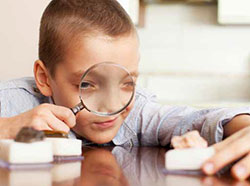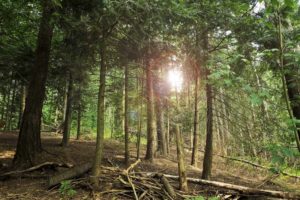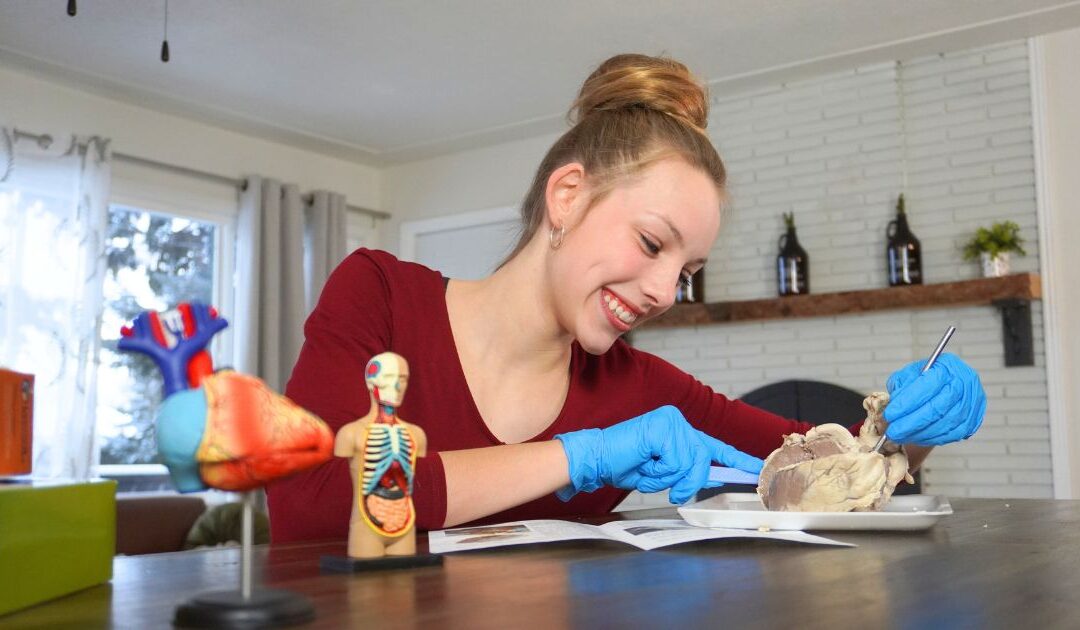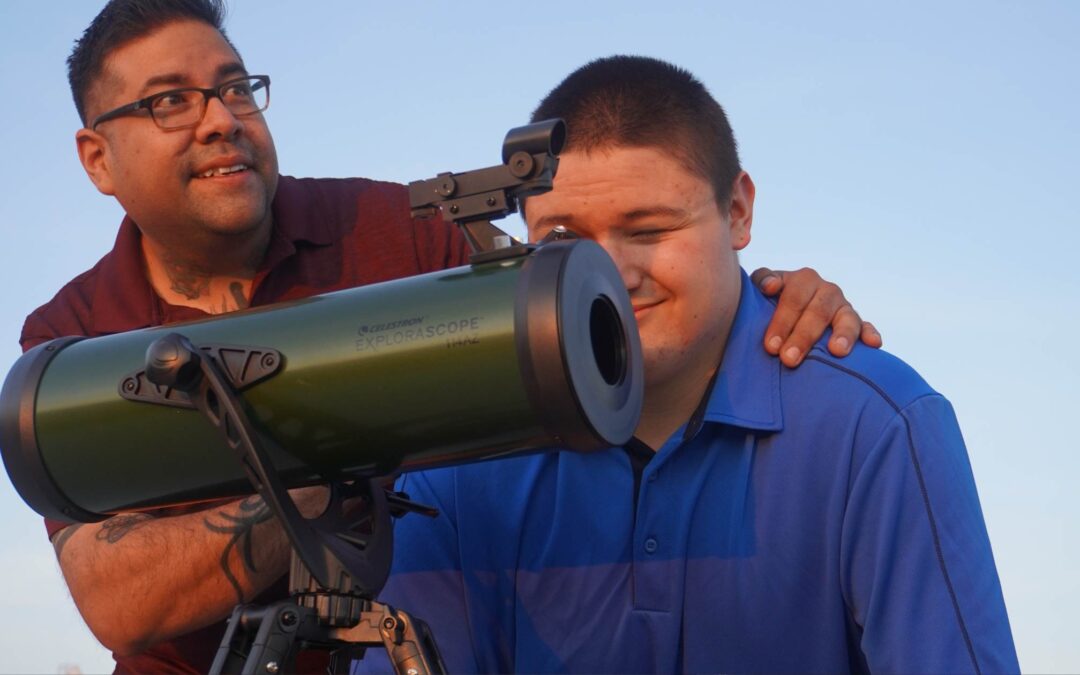ABOUT THE AUTHOR:
After teaching a summer science camp for the past four years in a row, Debbie Schaner is a resident expert. Debbie helped her husband Frank start Home Science Tools back in 1994. Since that time, she has had four homeschooled children graduate from high school and go on to college. She is now a grandmother to six children, who she passes the joy of learning science to as often as possible. Science camps are one way Debbie does that.
I have taught a summer science camp for several years. The children I have taught enjoy the camp and look forward to the next summer! Every year we have a theme and the children have started requesting a subject for the next year as we end the camp.
A parent, grandparent, or a couple of homeschool friends could teach the camp. Having two people or an assistant (perhaps an older child) is ideal, but you can teach a group of students on your own.
Planning a Summer Science Camp: The Basics
Age Range
The ideal age to begin camp is five years old, but teaching a wide range of ages works in this situation. I have successfully taught children ranging from 2-9. It is possible to find activities that are enjoyable for each child, including a mix of science and art, but also a challenge. Don’t expect your 6-year-old to get the same out of science camp that your 12-year-old does. Rather, play to their individual interests and strengths.
Schedule
The ideal camp runs for five days, for about four hours each day. I like to feed the children lunch at the culmination of camp as that is a positive time together to review the day. We have food that reminds us of what we have learned. This is one of the children’s favorite parts. We also use this time to review concepts and give out rewards.
- Each day requires 15-30 minutes set-up.
- Clean-up (with the children helping with some of it) may take 30 minutes each day.
- Be flexible: Take bathroom and drink breaks. Expect a few mishaps and time needed to comfort a child or clean-up between activities.
 Science Topics
Science Topics
Choose a subject you and the children are interested in and desire to know more about. Here are some examples of themes you could choose from:
- Insects
- Weather
- Ocean Animals
- Space
- Biomes
- Rocks and Minerals
Another approach is to teach a unit study each day. Here’s an example:
- Day 1: Earth
- Day 2: Rocks
- Day 3: Plants
- Day 4: Animals
- Day 5: Weather
Organize and Plan
The best way to get this all accomplished in 4 hours a day is to have everything prepared ahead. I have gathered, sorted and cut out each item I need for each day. I also like to set aside the entire week so that each evening I can clean up and be ready for the next day. Then I cut up all the food for the following day’s lunch and make any preparations I need.
Planning a Summer Science Camp: The Details
Timeline
1. I begin the day with prayer and a song that we sing all week. I then introduce the subject in a fun way. For example, when studying biomes I brought out plastic animals for the children to sort.
2. Next, we begin a lesson that is age appropriate. The older students will be writing vocabulary and definitions. The younger children will have an age appropriate activity.
3. We take part in an art activity together that teaches about the science topic. An example is to make stars with glitter on paper when studying astronomy. The art project will represent the different intensities of heat (red, blue and white).
4. Give your children a break that includes exercise. Water play is usually part of this activity on a hot day!
We come back to finish work, add to a science notebook page, or create a new art project that reinforce the science topic.
5. A planned activity or just play time is welcomed while I prepare the lunch. We then have lunch together with review and rewards. I give rewards for good behavior and working hard all morning. At the end of the week, I give small rewards such as a gummy bear for each question they are able to answer.
 How to Prepare for Science Camp
How to Prepare for Science Camp
I spend countless hours collecting materials, but I must add it is so enjoyable and fun to think of interesting ways to introduce a subject. You may choose to teach a topic where the work is already done for you (by using a unit study, for example). For older children, you may choose to utilize this time to perform specific experiments you did not have time to do during the year.
This is how I use my time:
-
- I choose my topic and begin research through books and the internet. I make sure we have plenty of pictures from magazines, books and I save pictures on Pinterest.
- Next, I pull my resources together to form my outline of what I want to teach each day and write my daily lessons.
- Then I use the internet to help me find creative food ideas to enhance the learning. An example is the planets lunch or owl sandwiches we had (both ideas found on Pinterest).
- The internet also helps me develop creative art projects that go along with the lessons, such as keeping biome notebooks or making marbled planets.
- Once I have my plan in place, I begin gathering my supplies for the food and projects.
- I then put the supplies for each day into separate boxes and label them (for example: Day 3, Jungle).
- I utilize spare time to create backgrounds needed for a mural, cut arrows needed for a cycle, print materials and generally have all the projects ready.
Examples of Science Camp Plans
Rocks and Minerals
Day 1: Introduction to minerals. This will include showing examples (mineral specimens or pictures). The snack and food will include these minerals as well. Cheese is an excellent example of the mineral calcium. We will review what calcium, the mineral, looks like from our picture or sample.We will then go on a hunt for rocks out of doors. Each child will have a cloth bag to collect what they find.
We will come back and wash up and have a snack. We will then continue learning through the art activity. We will have also learned about crystals in the introduction and so we will start to make our own crystals (that will be ready by Day 5).
The rest of the week we will learn about the rock cycle and each type of rock and will have food and activities to reflect that. An example is a sandwich for sedimentary rocks. Dessert may be ice cream with hard shell topping to represent igneous rock.
The review consists of questions related to what we learned. The questions may be as simple as “What did we learn about today?” Have students name three igneous rock examples. Or ask, “What is the difference between a sedimentary rock and a metamorphic rock?”
 Biomes
Biomes
- Day 1: Ocean
- Day 2: Rainforest
- Day 3: Desert
- Day 4: Savanna/grasslands
- Day 5: Forest
At the end of the week you may decide to take the children to a special place that relates to what they learned all week. Grandparents may enjoy being involved during the week as well as on the field trip. If you have been studying biomes, a trip to the beach or a walk in the forest would be fun. If you are studying space, an evening with a telescope would enhance learning.
With these tips and examples, I hope you will discover the delight of teaching children science by having a camp this summer!
HAVE FUN!






